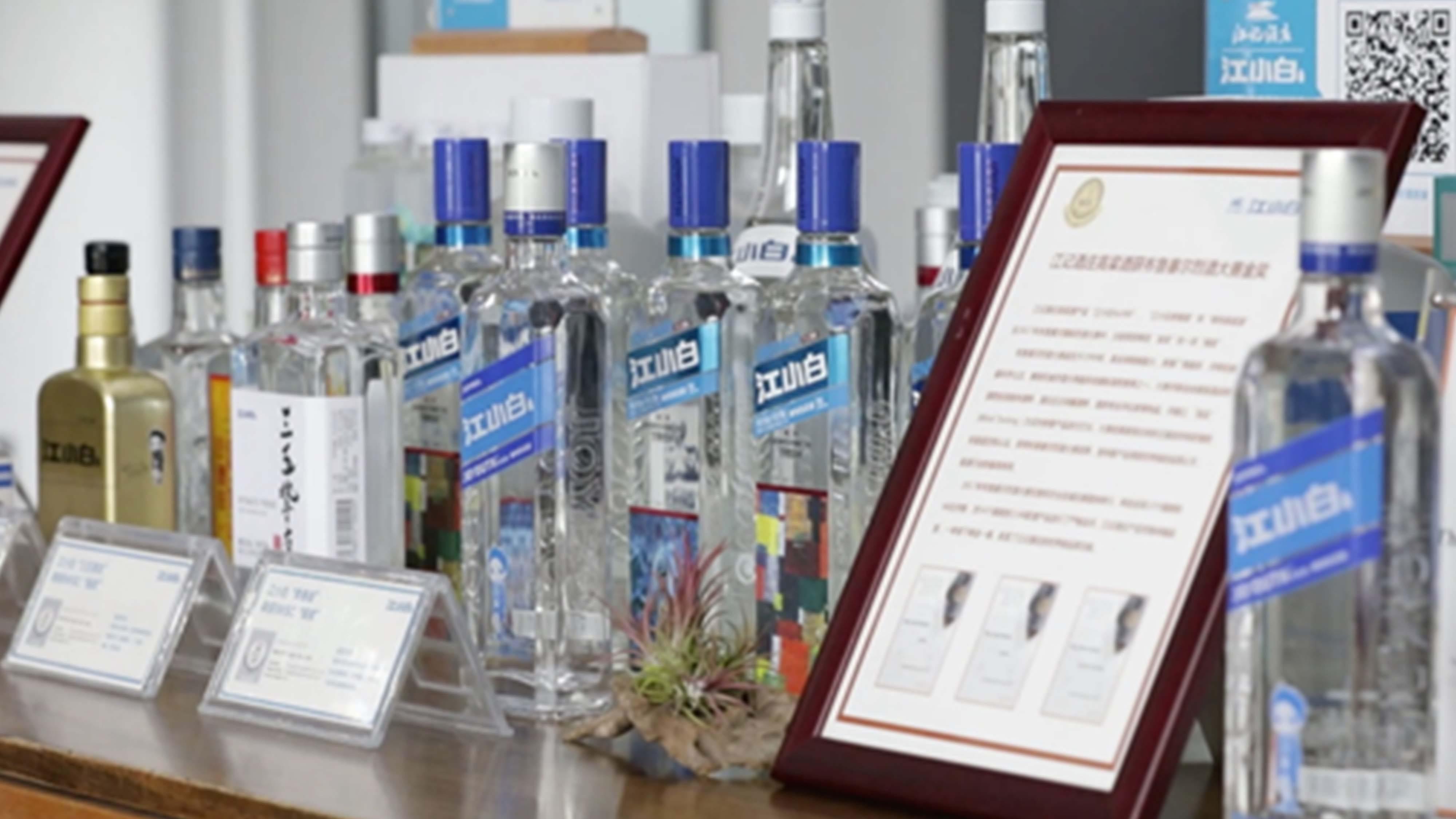
Business
22:13, 01-Mar-2018
Remaking Chinese white liquor to lure a new generation
CGTN's Liu Yang and Li Yang

China has been producing baijiu, or "white liquor", for more than 5,000 years and it is one of the world's most consumed liquors. It is well known to facilitate business in China as well as a staple beverage when gathering with friends and family.
In recent years, the traditional baijiu industry has faced intense competition from western distillers and a wider selection of spirits along with a nationwide austerity campaign, prompting producers to make use of innovative techniques.
Jiang Xiao Bai is the rising star in the baijiu industry. Located in southwestern Chongqing, the company have managed to win back customers in the last couple of years, especially in the young age group.

Jiang Xiaobai's mascot shown on a box / CGTN Photo.
Jiang Xiaobai's mascot shown on a box / CGTN Photo.
What makes Jiang Xiao Bai special is that they made the liquor out of a red glutinous sorghum, removing unwanted smells, and renders the product pure, with a lower alcohol proof. These factors made their product appeal to people in their 20's to 40's.
Brewing white liquor is a time-consuming business. The 480 fermenting vats that the company have roughly produce tens of thousands of tons of baijiu every year.
The brand strives to maintain strict control over the production process, as well as on the fermentation cycle, the selection of raw materials, fermentation strains, distillation equipment, dust removal time, and other procedures while adapting to the evolving taste of younger consumers, the production director tells CGTN.

Jiang Xiaobai's production lines / CGTN Photo
Jiang Xiaobai's production lines / CGTN Photo
Experts say as the consumption becomes the main driver of China's economy, especially when the younger generation comes of age has a greater disposable income, innovation remains the key driving sales.
According to data released by Nielsen, China liquor sales grew by four percent in 2016. Consumers aged between 26-35 spent most on liquor, the survey found.
However, one of the great potential dangers threatening the traditional liquor industry in China is that many young consumers are turning away from the sharp and fiery taste of the Chinese traditional spirit.
Now, to whet their appetite, the company pours vast amounts of research and tests before launching a new product. The result, a drink with signature qualities –smooth, light and pure.
In the emerging liquor market, three factors are driving growth – product innovation, precision marketing and channel expansion. The white liquor industry is an example of using innovation to open up a fresh way of developing business.

SITEMAP
Copyright © 2018 CGTN. Beijing ICP prepared NO.16065310-3
Copyright © 2018 CGTN. Beijing ICP prepared NO.16065310-3